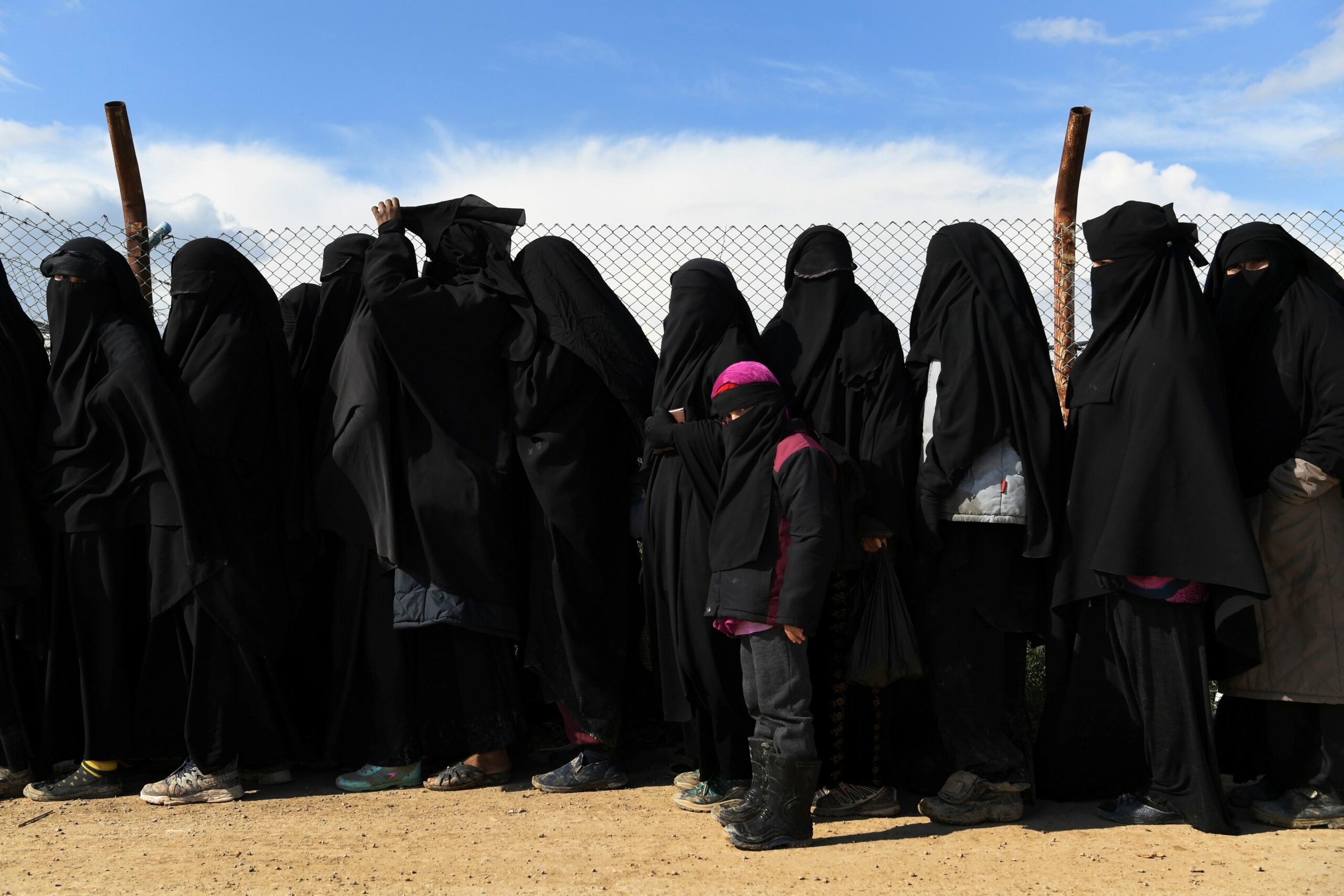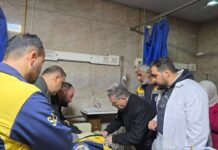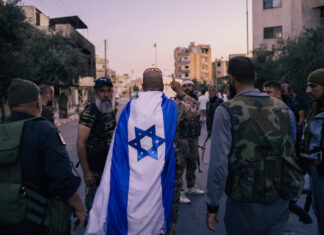A Ticking Time Bomb
Around 60,000 women and children are currently being held captive in al-Hawl and Roj camps in northeast Syria. The largest of these prisons is al-Hawl camp, which was originally established for Iraqi refugees of the 1991 Gulf War.
Between 2019 and 2021, during battles involving the Islamic State (ISIS) and Syrian Democratic Forces (SDF), tens of thousands of people evacuated to the camps, whose numbers rose steadily, especially in the aftermath of ISIS losing their final territorial foothold.

Unfit for Habitation
In a 2020 report published by the Syrian Network for Human Rights (SNHR), al-Hawl was dubbed to be “more like a prison camp” and said to hold tens of thousands of displaced women and children in inhumane conditions. Regarding the nature of these conditions, the report provides details of numerous human rights violations.
It states, “most of the tents are built using a poor, highly flammable type of plastic, which is also ineffective in protecting residents from the harsh climatic conditions that characterize the region.” It further states that fires have broken out resulting in the deaths of “at least nine civilians, including four children and one woman,” between April 2016 and October 2020.
During the same period, 54 civilian killings took place – mostly of children, while the victims were in the custody of the SDF. Such as the murder of Ali Adham Muhammad Khalaf, who was found strangled to death in 2018. The United Nations Office of the High Commissioner for Human Rights published an article in November 2022, which detailed the “heinous killing of two young Egyptian girls,” in al-Hawl. The pair of 15-year-olds had been suffering from stigmatization after being raped, a few days prior. They were later found murdered in a sewage ditch with stab wounds.
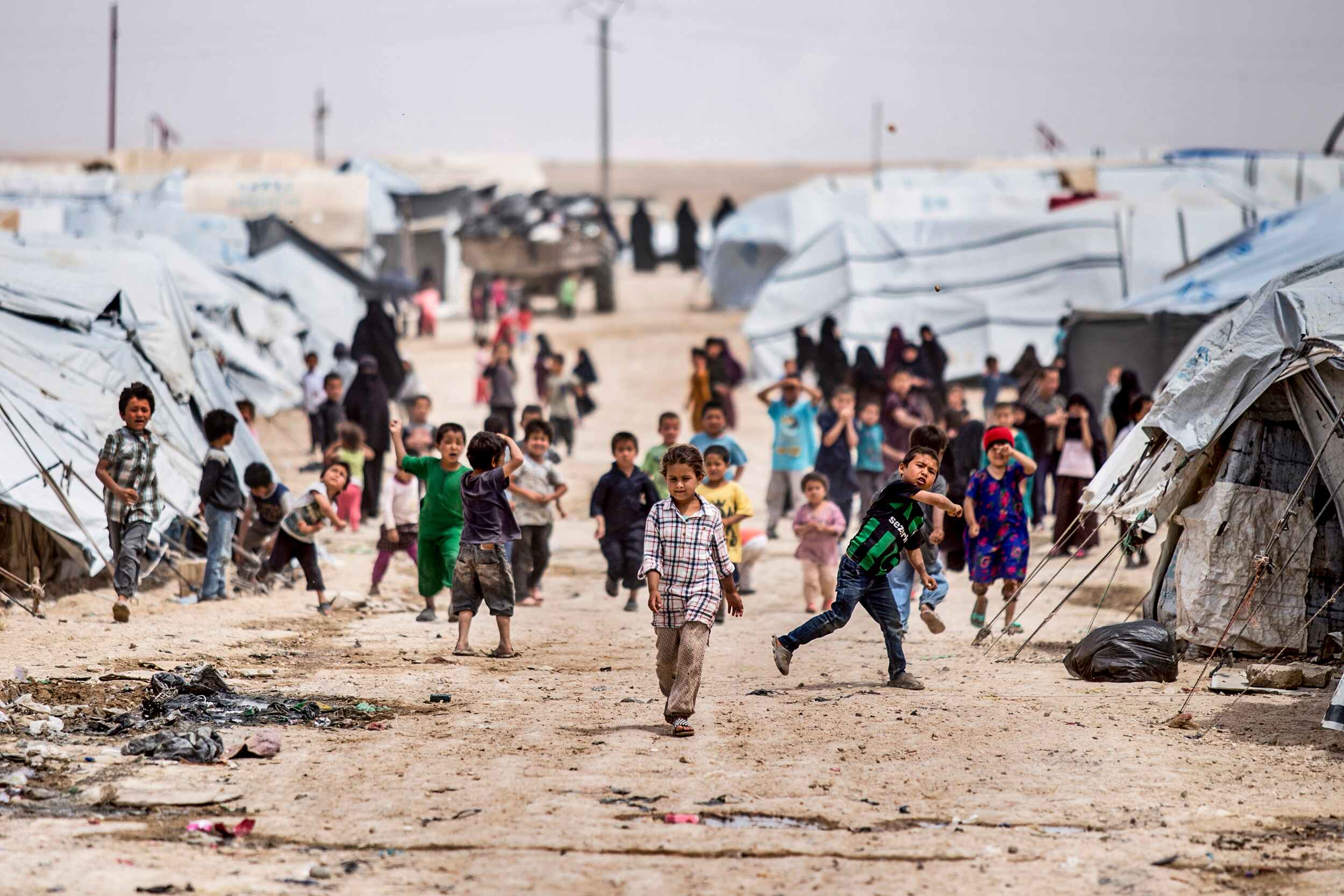
L24 managed to interview Umm Yahya, a 30-year-old Dagestani prisoner in al-Hawl Camp. Issues such as ideology, living conditions and hopes for the future were discussed. She exclaimed, “numerous challenges confront us daily. The most pressing issue is the absence of proper medical care, leaving us vulnerable and without essential treatment.” She summarizes her and her fellow detainees’ state, as one of “profound deprivation.”
Recipe for Disaster
Mothers held captive in al-Hawl are often stuck between a rock and a hard place, posed with the painful dilemma of either trying to retain custody of their children, or sending them away to secure a better future elsewhere. A common practice of the Kurdish authorities is to take the “boys to normal prisons for adults from the age of 12,” not because of any crimes committed, but because of their parents’ alleged deeds and connections and the fact they happen to be male. Such actions may push these boys towards radicalization.
Umm Yahya relayed, “One of the most agonizing challenges I experienced was the painful separation from my child.” She spoke of sending her son to Russia, in the knowledge she will likely never see him again, as a “heart-wrenching” necessity in order for him to escape the prospect of incarceration, for no sin of his own. She goes on to declare, “children in al-Hawl camp are severely neglected. There is a glaring absence of education and developmental opportunities.” She also voiced fears regarding their growth and potential – “concerns loom large regarding their overall well-being and their prospects for a hopeful future.”

It can be argued that such an environment must be profoundly counter-productive in the rehabilitation of al-Hawl’s detainees and a recipe for disaster for the tens of thousands held captive there. Serious concerns are raised regarding their futures and that of the surrounding region and beyond, if they are further pushed towards a problematic and violent radical ideology, exacerbated by inhumane treatment and indiscriminate suppression.
Escaping the Rot
The SDF’s approach in dealing with their prisoners doesn’t seem to be bearing any fruit. SNHR’s report found that SDF had violated many principles of international human rights law, including arbitrary deprivation of liberty, freedom of movement and the right to education and health care. Detainees were not provided any opportunity to “defend themselves, to know the reasons for their detention, or to challenge them through the opportunity to obtain a fair trial.”
With no end in sight, acceptable living conditions or hope for rehabilitation, detainees are compelled to strive day and night and by whatever means necessary, to secure their futures. For some there are a few possible ways of escaping their plight – escape or smuggling, both highly dangerous options are the main avenues. Huge sums of money, in the region of $16,500, must be paid and multiple dangers overcome – in an arduous and lengthy journey – in order to obtain freedom.
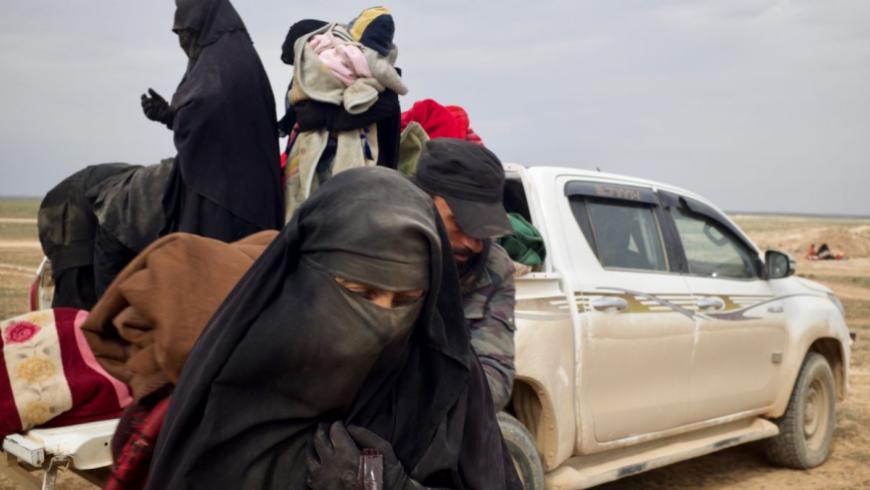
Safety in Idlib
After traversing hundreds of kilometers and enduring countless difficulties, Safiya R. speaks of life after al-Hawl, expressing her relief and gratitude at having obtained peace, security and better prospects for her children. When arriving in the liberated areas of Idlib, she recalls the reception she was given. “We lived in fear that Hayat Tahrir al-Sham (HTS) was our enemy and they would take us away, beat us, and that life in Idlib would not be pleasant for us.”
“They knew us, knew where we lived, and that was it,” she said, “It is important that if you focus on your home and children and do not try to harm any Muslims here, no one will think of making your life difficult.” She shared that neither she, nor those close to her, suffered under HTS, which was a major surprise to them, since they had been conditioned by ISIS to believe that they would be severely maltreated. She concluded, “we only experienced good treatment and received help in everything we asked for.”
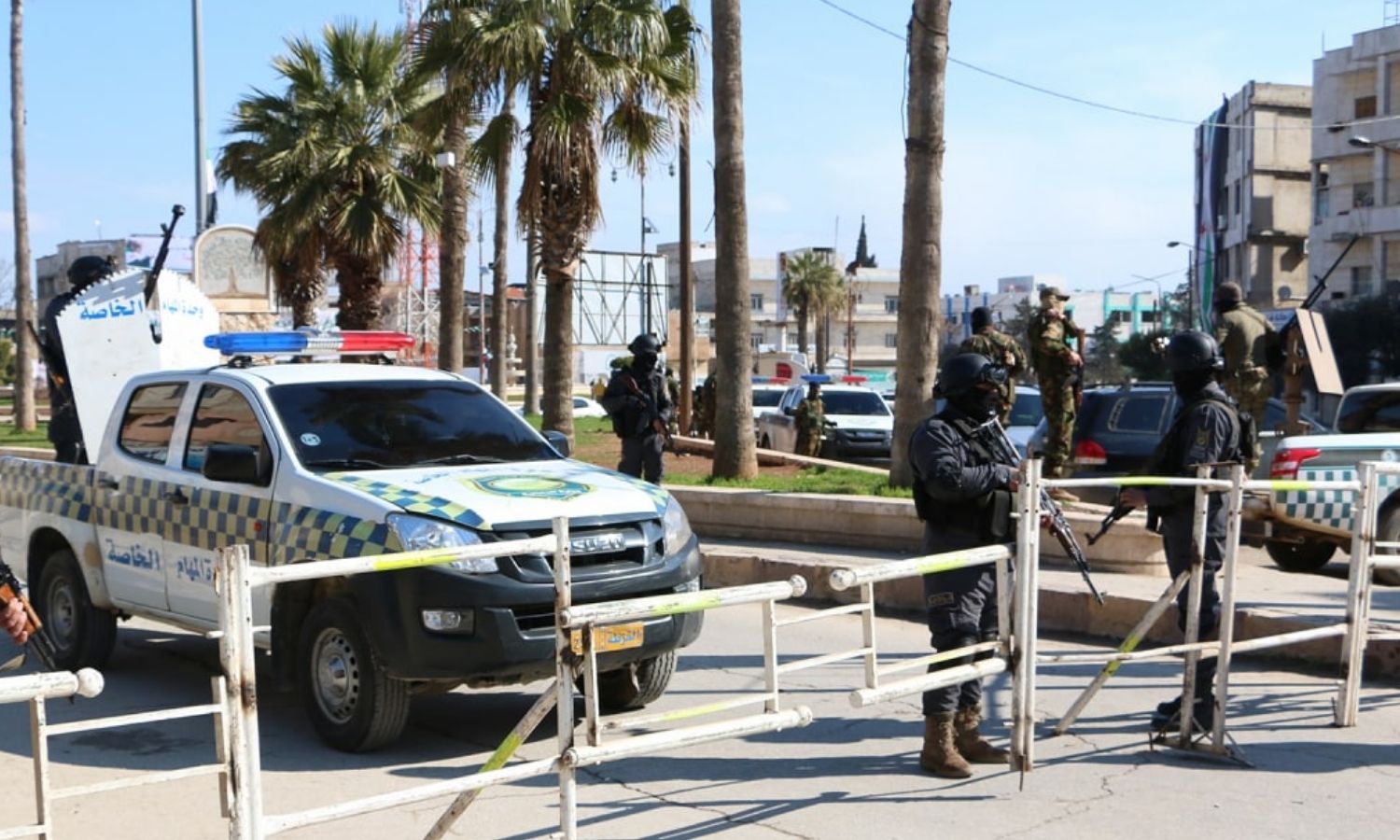
Defusing a Ticking Time-Bomb
The dire conditions and lack of opportunities in the SDF prison camps pose a serious threat, with potential for radicalization and future dangers, as prisoners, including children, are subjected to inhumane treatment and denied basic necessities and rights.
Efforts must be made to address this crisis and defuse the ticking time-bomb. The international community should come together to provide assistance for repatriation or rehabilitation programs focusing on education, mental health support, and initiatives to counter extremist ideologies. The liberated areas with limited capabilities have shown how this dilemma could be partially solved, but it is by no stretch of the imagination a comprehensive solution.
